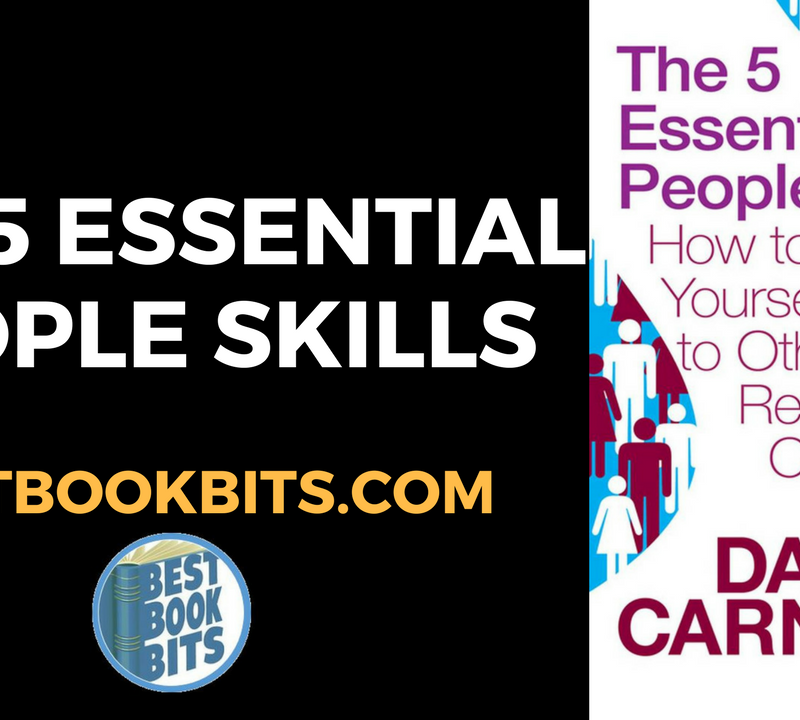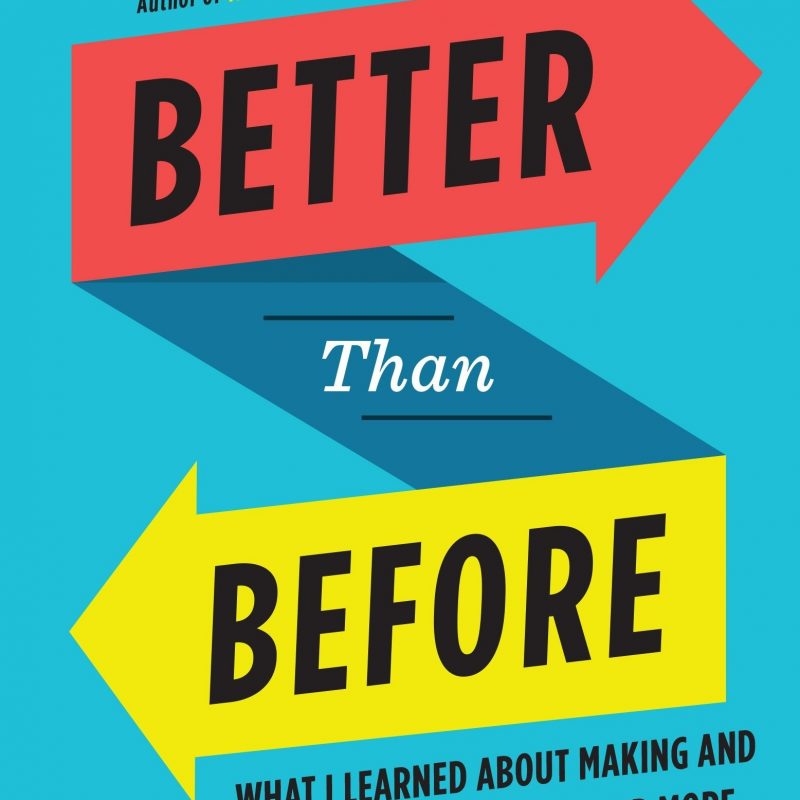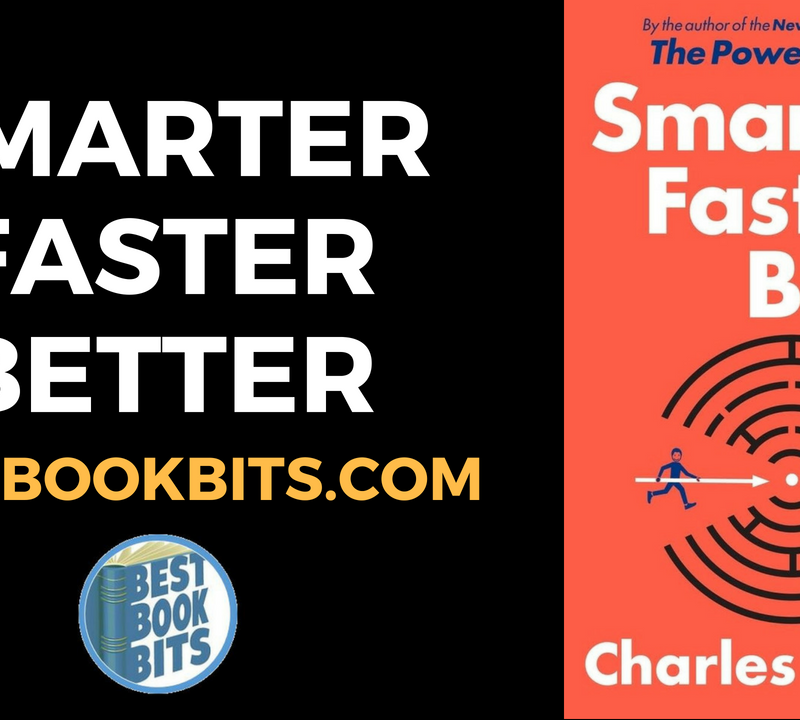★DOWNLOAD THIS FREE PDF SUMMARY HERE https://go.bestbookbits.com/freepdf
? MY FREE BOOK TO LIVING YOUR DREAM LIFE” https://go.bestbookbits.com/first-seven-steps
? SPONSOR BESTBOOKBITS BY USING PATREON https://www.patreon.com/bestbookbits
? SUPPORT BESTBOOKBITS BY CLICKING THE LINKS BELOW
150 PDF Summaries: https://go.bestbookbits.com/150
Coaching Program: https://go.bestbookbits.com/coaching
Subscribe to My Channel: https://www.youtube.com/bestbookbits?sub_confirmation=1
Website: https://bestbookbits.com
Instagram: https://www.instagram.com/bestbookbits
Spotify: https://open.spotify.com/show/0q8OW3dNrLISzyRSEovTBy
Facebook: https://www.facebook.com/michaelbestbookbits
Book Club: https://bestbookbits.com/bookclub/
Mailing List: https://mailchi.mp/d1dfc1907cdb/bestbookbits
- Your brains is built of cells called neurons and glia.
- Each cell sends electrical pulses to other cells.
- A typical neuron makes about 10,000 connections to otherneurons.
- There are more connections in one cubic centimeter of the brainthan there are stars in the Milky Way.
- Thoughts don’t seem like physical things. They don’t seem likethey exist in a tangible form, but that’s exactly what is going on. Thephysical structure of the brain determines the thoughts that flow from it.
- Men in a study voted pictures of women with dilated pupils asmore attractive than those without.
- Consciousness is the smallest player of our mind. Most of ourbrain operates in a hidden mode.
- Your conscious mind is like a newspaper. It delivers headlinesbut rarely show you what’s going on behind the scenes.
- When you say, “I just got an idea!” You are actually referencingall sorts of work your brain has been doing behind the scenes for minutes, days,or months.
- “In each of us there is another who we do not know.” -Carl Jung
- First of all, you have to realize that conscious thought shouldNOT be involved in most decisions and actions. If you had to decide every damnthing you would never get anything done.
- Conscious awareness takes about 0.5 seconds. Hitting a baseballtakes 0.4 seconds. It’s literally impossible to consciously hit a baseball.Your brain makes the choice to hit and swing with unconscious information.
- Bruno was burned to death with an iron mask on his face toprevent him from speaking eloquently and firing up the crowd. Interesting storyabout the power of ideas.
- There is a concept that a conscious idea is actually acollection of signals your brain picks up that all point in the same direction.Once the signal becomes strong enough, it becomes a conscious thought. If youbrain gets a signal that points one way and another pointing a different way,then they sort of cancel one another out. It’s like the brain needs enoughunconscious votes before it generates a conscious thought.
- I like the concept of your mind as an iceberg. Conscious thoughtis just the visible tip. Unconscious thought is the mass beneath the water.
- The only way society functions is by groups of peopleconsciously focusing on things. Whether I’m on a plane or not, I never thinkabout pre-flight procedures, how much gas is in the plane, whether the landinggear is working well, and so on. (By the way, if you’re on a plane right now–myapologies.) but I don’t need to think about those things because someone elseis consciously focused on them. This is how we build well-functioning teams andsocieties. We are all running on autopilot in nearly every area of life, buteach of us has the capacity to be consciously focused on a few things. Dividethose areas of focus up in smart ways and you get a really effective team.
- We are astoundingly poor observers of our own experience.(Reminds me of the gorilla video experiment. This is called “changeblindness.”)
- One-third of the human brain is allocated to vision.
- It’s interesting to note: your vision is simply a cone of visionwhere you point your eyes. We all live our lives by viewing only the world ofvision that is inside this little cone… without even realizing it.
- The brain is organized like a marketplace, not an assembly line.Even tasks that are historically depicted at a straight line (vision, forexample) are actually the result of a network or inputs (vision is impacted notjust by light, but also by sounds, etc.). This means that the entire world asyou know it is not a simple series of cause and effect relationships. Rather,there are many tiny causes that build into some final effect. There are manybits of information that impact vision. (If this is true, then there are manybits of information that impact behavior.)
- Chicken sexing is really hard, but the best in the world are inJapan. Male and female chicks look almost exactly the same at 1 day old. Theytrained new chicken sexers by trial and error feedback … Even though theycouldn’t explain how they did it. It’s unconsciously learned.
- There is a really cool research test covered in chapter 3 thathelps identify your internal biases. Are you biased toward certain religions,genders, races, body types, etc? It could be very interesting to take this,uncover your hidden biases, and then take active steps to reduce those biases.
- People tend to love reflections of themselves in others and onproducts. This is called “implicit egotism.” We like people who share ourbirthdays, have names similar to our, and so on.
- People named Denise or Dennis are disproportionally likely to bedentists.
- The mere exposure effect proves that our brains tend to likethings that we are exposed to often. Similarly, we tend to associate two thingswith one another if we hear that pairing often. (This reminds me of people whosay they have “great networks” over and over. Eventually, you associate the twothings together and you’re like “That guy is a great networker! He has tons ofamazing contacts.” Mere exposure effect at work — and with hustle on that guyspart it can become a reality too.)
- It can be a very good idea to “trust your gut” because a varietyof studies have shown that your unconscious mind knows the correct decisionbefore your conscious mind does.
- We make decisions consciously and then begin to automate themand follow them unconsciously.
- Humans have an incredible ability to learn and, with enoughpractice, mindlessly automate almost any skill.
- We are designed and hard-wired to like certain animals (humans),foods (fruits, veggies), and even thoughts. For example, we only see a smallportion of the light spectrum (visible light and not infrared, for example).Our biology determines our reality.
- We accept the reality presented to us. And this reality isconstructed by our brains, not merely interpreted by our brains.
- Reality is far more subjective than we suppose.
- Social behavior is wired into our brains. We are born with atendency for social behavior.
- We are least aware of what our mind does best. Our instincts areoften blind to us. They are burned down so deep into our genetic code that wedon’t even notice them.
- William James said we have more instincts than other animals,not less. And this is why we are flexible thinkers.
- We often assume instinct is low level thinking, but in fact ithas millions of years of evolution built into it.
- The benefit of instinct is speed and automatic behavior. Thecost is failure to notice them.
- We are unable to see the instincts that drove our behavior. Theyare so critical, they are subconscious.
- The more simple something seems, the more neural circuitry thereusually is behind it.
- Research shows that women are deemed most beautiful by men andwomen at the peak of their menstrual cycle (10 days before menses). Thesechanges in a female’s appearance are incredibly subtle, but they only need tobe enough to trigger the unconscious realization by partners to work. It’s notquite clear what the tip offs are (ears and breasts become more symmetrical,for example).
- Women are particularly sensitive to other women’s cycles.Perhaps due to competition?
- Researchers found that strippers earned more at the peak oftheir cycle ($68/hr average) than when menstrating ($35/hr average).
- The human mind runs on conflict. There are competing beliefswithin your unconscious mind that are all battling for the single output ofyour conscious behavior.
- Reason wants one thing. Emotion wants another. But they boththink they have the right way of solving the problems they face.
- The brain is made of competing subsystems. For example, systemone and system two. System one is automatic and heuristic. System two isconscious and analytical.
- The neuroanatomy of your brain maps roughly with system one andsystem two.
- Rational cognition involves external events. Emotional cognitionis about your internal state.
- Emotion (or lack of emotion) often tips the scales of ourbehavior.
- Kahneman and Tversky’s famous studies on discounting ($100 nowvs $110 in one week compared to $100 in 52 weeks vs $110 in 53 weeks) wereinvestigated by neuroscientists. They found that immediate payoffs activatedthe emotional centers of the brain (impulsive behavior) while long-term rewardsactivated areas of higher cognition (rational behavior).
- Your behavior is simply the end result of the battles betweenshort and long-term desires.
- Some philosophers refer to commitment devices as UlyssesContracts after the famous story about Ulysses and the Sirens.
- Our brain is a highly overlapping and redundant system. That is,various parts of the brain can accomplish similar tasks.
- Possible countermeasure against Alzheimers: Cognitive Reserve.This is a term scientists use to describe why some people have brains that wereravaged by Alzheimers but never showed symptoms. By challenging their brain andstaying mentally active, these people developed multiple pathways for solvingthe same problems. Alzheimers might prevent one approach, but you still haveother pathways. This cognitive reserve counteracted the Alzheimers symptoms.When part of the brain degrades it was not even missed because of alternativesolutions.
- Brains seek patterns. In many ways, our brains are wired tocreate meaning from meaningless data.
- Dreams illustrate our skills at generating a narrative fromunrelated pieces of information.
- Research by Pennebaker: studies or rape victims have shown thatnot discussing your problems (keeping secrets) might lead to more harm than theevent itself.
- Biology and brain research has revealed that instead of asking,“What’s the best way to solve that problem?” We should ask, “Are theremultiple, overlapping ways to solve that problem?”
- Who you have the probability to be starts at conception. Forexample, the Y chromosome leads to an increase in criminal behavior of morethan 800 percent. The majority of prisoners carry these genes as well as 98.4percent of inmates on death row. If you are male, you are predisposed toviolence.
- When an accident happens with animal handlers (a lion attacks atamer, for example), we often refer to the fact that it is an animal. What wereyou expecting an animal to do? But humans are animals too. And yet, we oftenassume that people are rational brings that would not resort to animalisticbehavior. We assume that humans have free will. That assumption may be wrong.
- Given the current state of research nobody can find a way aroundthe lack of free will. If free will exists, then it must appear somewhere inthe brain. But there are no free sections of the brain. Every section of thebrain is connected to other parts of the brain.
- Research by Lippet: ran the famous study on free will whichsparked the idea that our conscious mind was the last one to know what we aredoing.
- According to the author, it doesn’t matter whether or not wehave free will.
- Acts cannot be separated from our biology.
- Societies will always need to get bad actors off the streets. Alack of free will does not mean there is no need for our justice system.
- Our perceptions and behaviors are controlled by hidden, neurobiologicalfactors.
- There is no distinction between “his biology” and “him.” Theyare one in the same.
- Research by Steven Laconte and Pearl Chu: you look at a pictureof chocolate cake. A screen displays a vertical bar that shows the areas ofbrain activity present during your craving. Then, you try various strategies tomake the bar go down. When it does, you are effectively decreasing the activityof the brain that causes cravings. This “pre-frontal workout” helps youstrengthen your circuitry to combat cravings.
- The complex web of genetics and environment constructs thetrajectory of human life.
- The conscious mind is not the one driving the boat.
- We are the sum total of our neurobiology. What we think of as“him” or “her” is really the average or that person’s neurobiological chemicals(and resulting behaviors) over time. The personalities we think of as ourselvesare time averaged versions of our neurobiology.
- Huntington’s disease is the result of a change to a single gene,but it is an outlier. Most genetic diseases are the result of subtle changesand interactions across many genes. (So even our DNA is the result of manysmall changes.)
- The contributions of the genome to our behavior can only beunderstood in the context of interactions with the environment.
- Research by Avshalom Caspi: they looked at gene-environmentinteractions and depression and found a bit of a link.
- Environmental effects can multiply the impact of biology andgenes. Our behavior is both nature and nurture.
- Although our biology underpins everything about us, we cannotreduce the human experience to a collection of molecules and atoms. Why?Because of the concept of emergence. Just as the ability to fly emerges frompieces of metal in a plane, the ability to think emerges from our atoms. And wedon’t yet understand how this beautiful mystery works.
- ★DOWNLOAD THIS FREE PDF SUMMARY HERE https://go.bestbookbits.com/freepdf
? MY FREE BOOK TO LIVING YOUR DREAM LIFE” https://go.bestbookbits.com/first-seven-steps
? SPONSOR BESTBOOKBITS BY USING PATREON https://www.patreon.com/bestbookbits
? SUPPORT BESTBOOKBITS BY CLICKING THE LINKS BELOW
150 PDF Summaries: https://go.bestbookbits.com/150
Coaching Program: https://go.bestbookbits.com/coaching
Subscribe to My Channel: https://www.youtube.com/bestbookbits?sub_confirmation=1
Website: https://bestbookbits.com
Instagram: https://www.instagram.com/bestbookbits
Spotify: https://open.spotify.com/show/0q8OW3dNrLISzyRSEovTBy
Facebook: https://www.facebook.com/michaelbestbookbits
Book Club: https://bestbookbits.com/bookclub/
Mailing List: https://mailchi.mp/d1dfc1907cdb/bestbookbits













